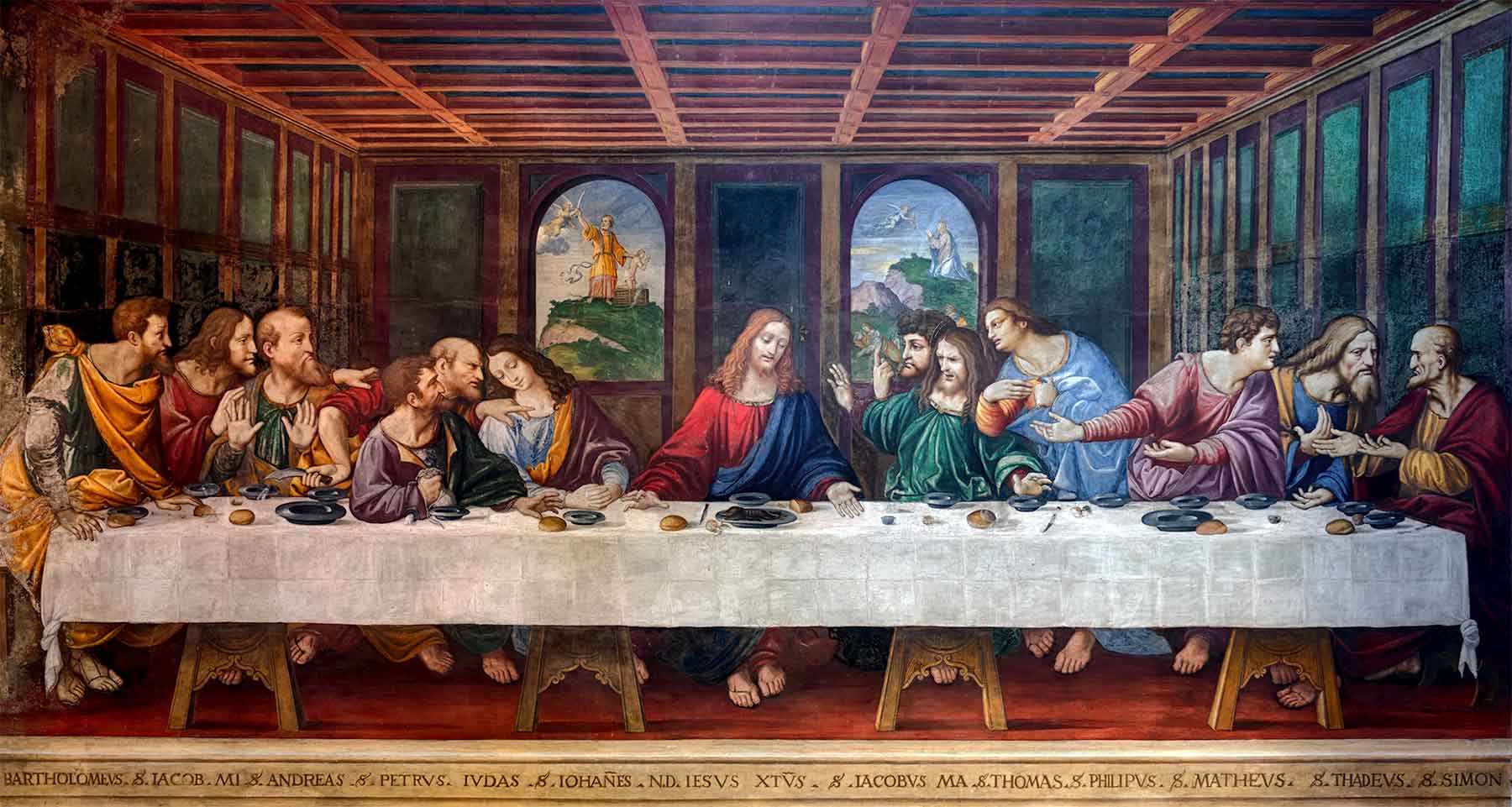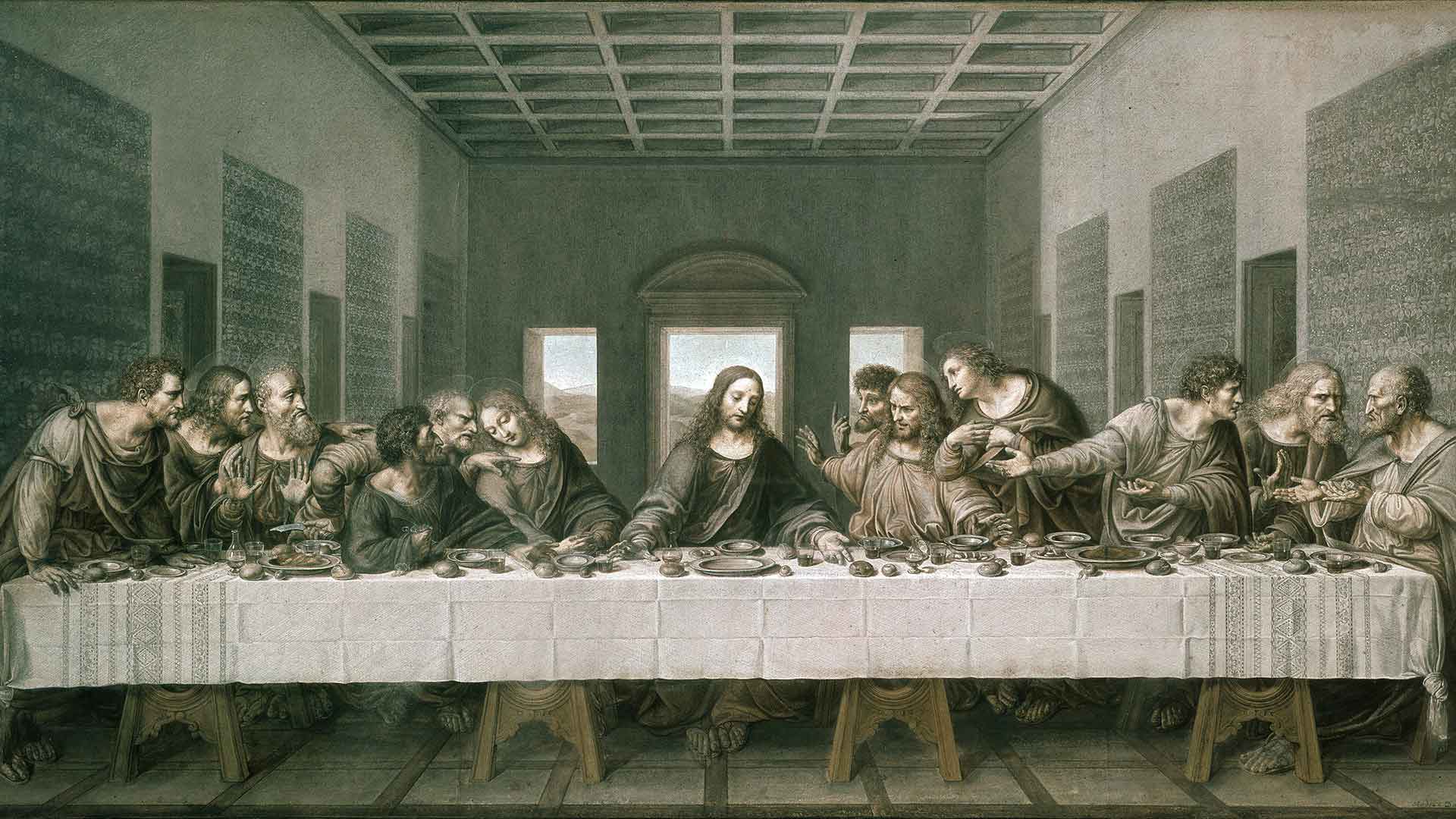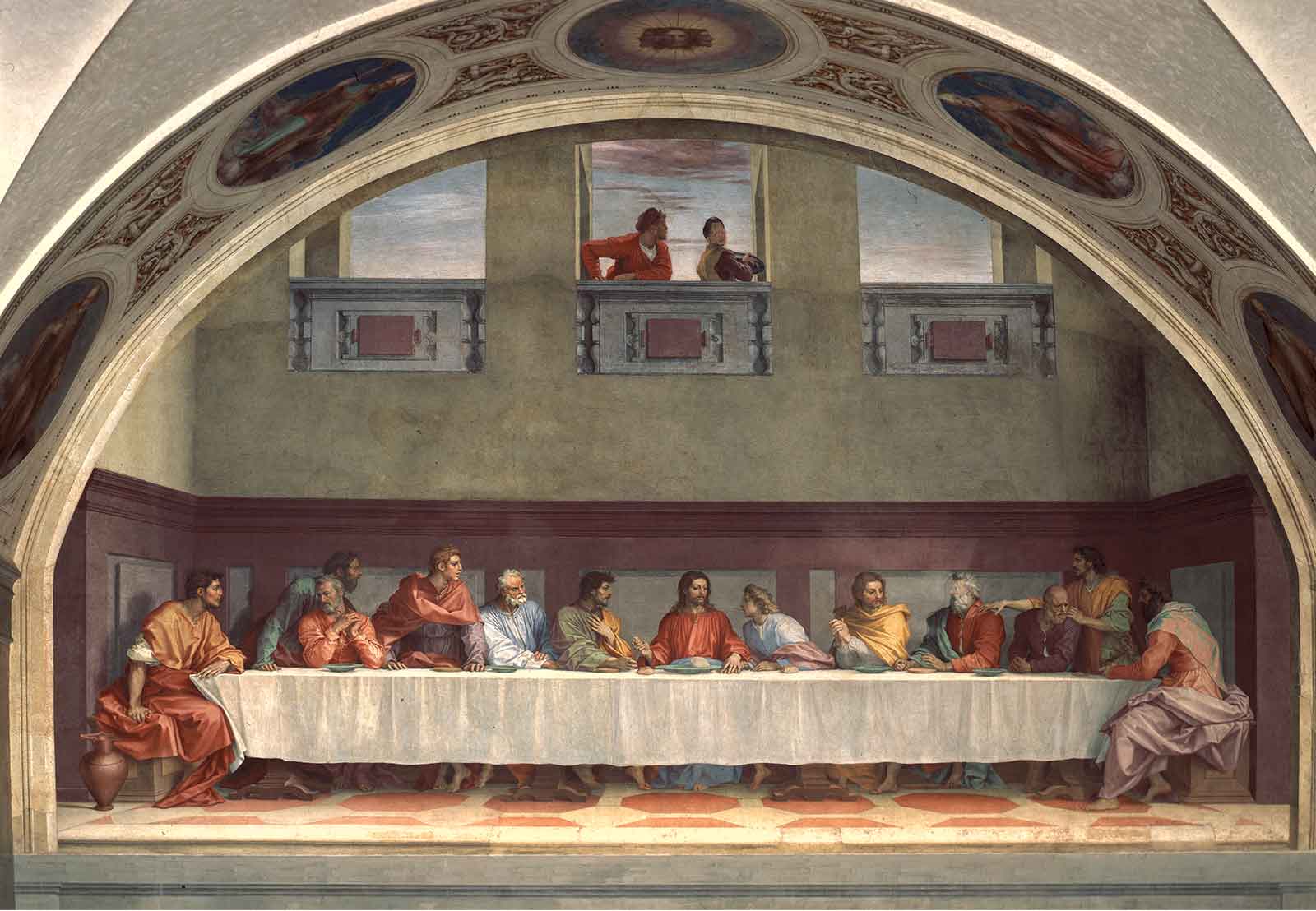

Towards the mid-16th century, an unknown artist painted a frescoed replica in the church of Sant’Ambrogio in Ponte Capriasca. It is an important piece as it was the first to include the names of the apostles beneath each of the figures, which we still use today.


In 1619, the cardinal donated the painting to the Pinacoteca Ambrosiana, where it can still be found today.

At the end of the 18 th century, Louis XVI of France commissioned André Dutertre to produce a perfect replica of the Last Supper. It was also his intention to show what the painting’s state of preservation was like and salvage as much of its original appearance as possible. Dutertre carried out a very in-depth study of the painting and other copies that had already been made. He even replicated Jesus’s feet and the decorative tapestry on the background, which at the time had already worn away.

At the end of the 18 th century, Louis XVI of France commissioned André Dutertre to produce a perfect replica of the Last Supper. It was also his intention to show what the painting’s state of preservation was like and salvage as much of its original appearance as possible. Dutertre carried out a very in-depth study of the painting and other copies that had already been made. He even replicated Jesus’s feet and the decorative tapestry on the background, which at the time had already worn away.

Even 20 th -century art sought inspiration from Leonardo. The father of pop art, Andy Warhol, presented Sixty Last Suppers in Milan in 1987. The project, dedicated to The Last Supper, was a reworking of Leonardo’s painting through 60 black and white prints placed next to one another upon a 10-metre long canvas.

In the 16 th century, for example, Andrea del Sarto painted a version of the Last Supper in Florence, inside the refectory of San Salvi, where the humanity of the figures is expressed through Jesus, who is talking to Saint John.


